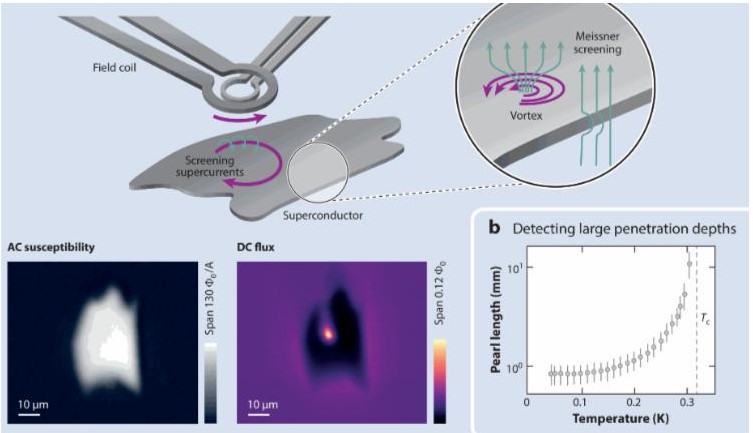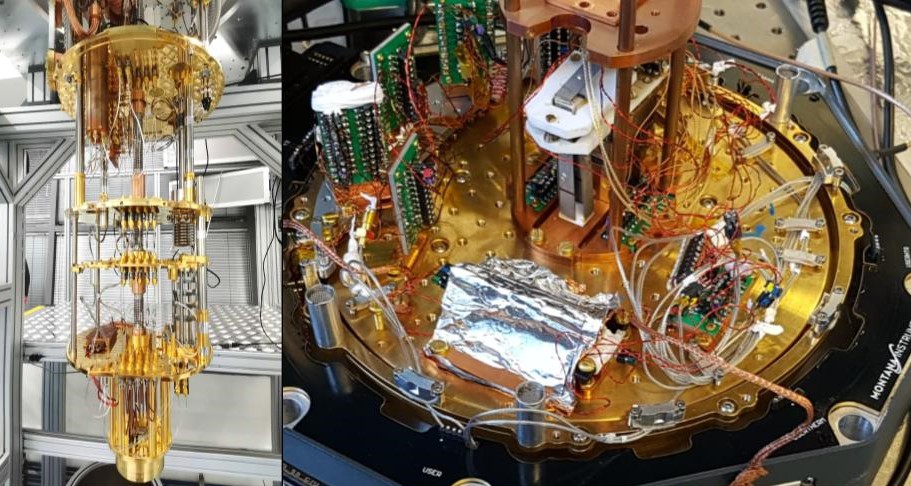
SQUID (Sperconducting QUantum Interference Device) is the most sensitive magnetometer to-date that uses quantum phenomena to detect magnetic flux. The SQUID is made of a superconducting ring and 2 parallel Josepheson junctions. Using the effects of flux quantization and josephson tunneling the SQUID converts magnetic flux into measurable voltage.
Exploring quantum materials with scanning squid microscopy
In this review we explore recent advances in the understanding and manipulation of quantum materials using scanning SQUID microscopy. Key developments include the study of nanoscale superconductivity, magnetic textures, and emergent quantum phenomena. We emphasize the critical role of SQUID technology in resolving spatially varying quantum states with exceptional sensitivity and discuss future directions for integrating SQUID microscopy into advanced experimental techniques.

Annual review of condensed matter physics, 2022
Advancing scanning squid microscopy with cryogen-free cooling
In this study, we present a scanning SQUID microscope integrated into a cryogen-free cooler, enabling high-resolution magnetic imaging without the need for liquid helium. The setup enables high-resolution magnetic imaging while maintaining low noise levels comparable to traditional cryogenic systems. This advancement expands the versatility of SQUID microscopy for exploring quantum materials and magnetic phenomena.

Review of scientific instruments 2019
Using vibrations to improve SQUID sensitivity
Vibrations are usually undesired in imaging systems, because they may reduce system performance. We developed a method to utilize mechanical vibrations to increase the sensitivity of our sensor. Imposed vibrations make the samples’ position periodically time dependent, allowing the measurement of the AC magnetic field generated at specific excitation frequencies, instead of the noisy DC signal. We developed a model for the spectral and spatial response of the vibrating signal, and demonstrated the increased sensitivity with our scanning SQUID.

Appl. Phys. Lett. 113, 173101 (2018)






